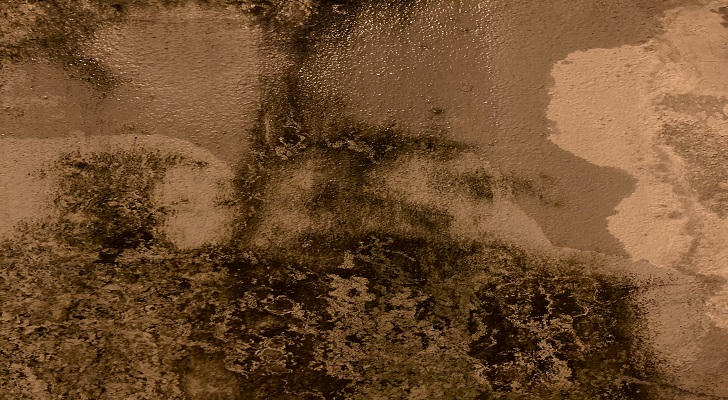The unwelcome sight of a water stain on the ceiling - a constant reminder of a hidden problem that's been lurking in the shadows, waiting to unleash its full fury on your home. It's a crisis that can strike at any moment, leaving you feeling helpless and frustrated as you wonder how to stop the damage and restore your ceiling to its former glory. But what if you could take control of the situation, identifying the root cause of the problem and taking proactive steps to prevent it from happening again?
In this article, we'll delve into the world of water stains on ceilings, exploring the common causes, effective removal methods, and preventative measures that will give you the power to protect your home and your peace of mind.

Causes of Water Stains on Ceilings
- Leaky roofs: Damaged, missing, or loose shingles can allow water to seep into your home and cause stains on the ceiling.
- Plumbing issues: Leaks from pipes, faucets, or appliances can also lead to water stains on ceilings.
- Condensation: High humidity levels in your home can cause condensation to form on ceilings, leading to water stains.
- Clogged gutters: When gutters are clogged, water can overflow and seep into your home, causing stains on the ceiling.
Removing Water Stains from Ceilings
- Identify the source: Before you start removing the stain, make sure you've identified and fixed the source of the leak.
- Clean the area: Use a mild detergent and water to clean the stained area. Avoid using harsh chemicals or abrasive cleaners, as they can damage the ceiling material.
- Apply a stain remover: If the stain is still visible after cleaning, you can apply a stain remover specifically designed for ceilings.
- Paint the ceiling: If the stain is particularly stubborn, you may need to paint the entire ceiling to cover it up.
Preventing Water Stains on Ceilings
- Regularly inspect your roof: Check your roof for damaged, missing, or loose shingles and repair them promptly.
- Maintain your plumbing system: Regularly check your pipes, faucets, and appliances for leaks and fix them quickly.
- Use a dehumidifier: If you live in a humid climate, consider using a dehumidifier to reduce the moisture levels in your home.
- Clean your gutters: Regularly clean your gutters to ensure they're free from debris and functioning properly.
💰 Estimated Costs to Repair Water Stains on Ceilings
Pro Tip: Always get 2–3 quotes from licensed contractors to avoid overpaying. Address stains early to prevent cost escalation! 🛠️
Repair costs depend on the severity of damage and required repairs. Below is a general price guide (USD):

1. Minor Stains (Surface-Level Fixes)
- Cost: $50 – $200
- Includes:
- Cleaning and bleaching stains.
- Applying stain-blocking primer.
- Repainting the affected area.
- DIY Option: Yes (costs drop to $20–$50 for materials).
2. Moderate Damage (Ceiling Patch Required)
- Cost: $200 – $800
- Includes:
- Cutting out damaged drywall.
- Replacing insulation (if moldy).
- Patching and repainting.
- Professional Labor: 4–8 hours ($40–$80/hour).
3. Extensive Damage (Structural Repairs)
- Cost: $800 – $3,000+
- Includes:
- Roof leak repairs ($300–$1,500).
- Plumbing fixes ($150–$500).
- Full ceiling section replacement.
- Mold remediation ($500–$2,000).
4. Hidden Issues (Unexpected Costs)
- Additional Costs:
- Electrical repairs: $100–$500.
- Ventilation upgrades: $200–$1,000.
- Foundation leaks: $2,000–$7,000.
📌 Factors Affecting Cost:
- Location: Urban areas often have higher labor rates.
- Ceiling Height: Vaulted ceilings increase labor time.
- Material Quality: Premium paint/primer adds 10–20%.
- Insurance: Check if your homeowner’s policy covers water damage!

FAQs
1. What causes brown water stains on ceilings?
- Leaks from pipes or appliances
- Condensation from high humidity
- Water damage from floods or storms
- Poor ventilation in the home
2. How to fix straight line water stains on ceilings?
- Identify and fix the source of the leak
- Clean the area with a mild detergent and water
- Apply a stain remover specifically designed for ceilings
- Paint the entire ceiling to cover up the stain
3. Is a water stain on a ceiling serious?
- Yes, water stains can indicate a underlying problem with the home's plumbing or roofing system
- Ignoring water stains can lead to further damage, such as structural damage or mold growth
- It's essential to address the issue promptly to prevent more severe problems
4. How to remove water stains from ceilings without painting?
- Use a stain remover specifically designed for ceilings
- Apply a solution of equal parts water and white vinegar to the stain
- Use a gentle scrubber to remove the stain
- Dry the area thoroughly with a fan or dehumidifier
5. Can water stains on ceilings be a sign of a larger problem?
- Yes, water stains can indicate a larger issue with the home's plumbing or roofing system
- Ignoring water stains can lead to further damage, such as structural damage or mold growth
- It's essential to investigate the cause of the water stain and address the issue promptly to prevent more severe problems

Conclusion
Water stains on ceilings can be a frustrating problem, but by understanding the causes, removing them quickly, and taking steps to prevent them, you can keep your ceilings looking their best. Remember to always identify and fix the source of the leak, clean the area thoroughly, and apply a stain remover if necessary. By following these tips, you can prevent water stains from forming in the future and keep your home looking its best.



